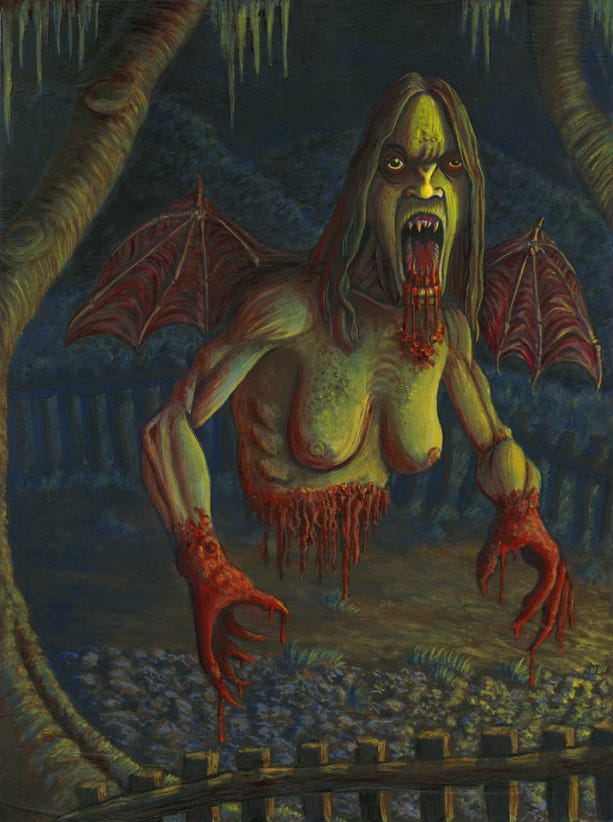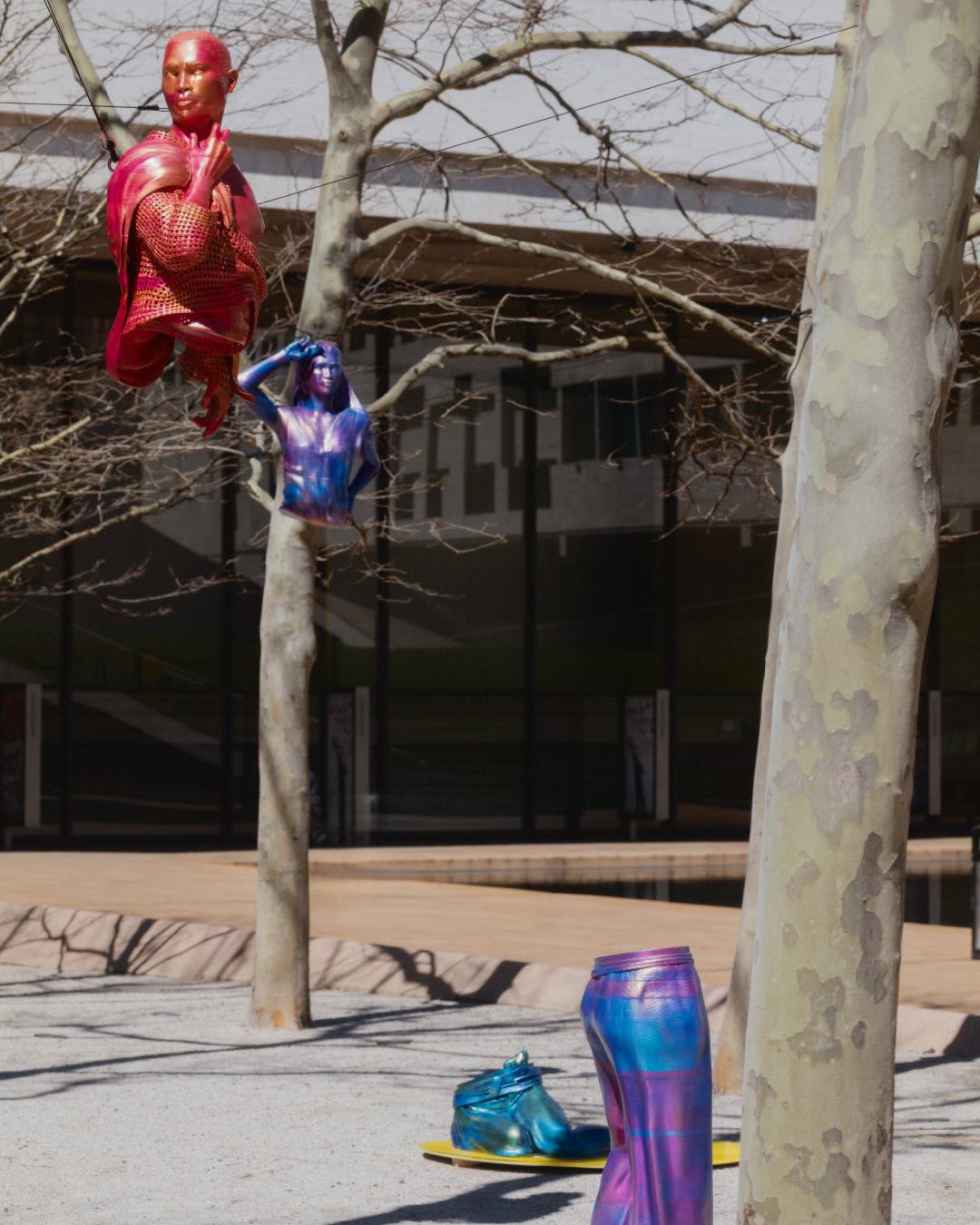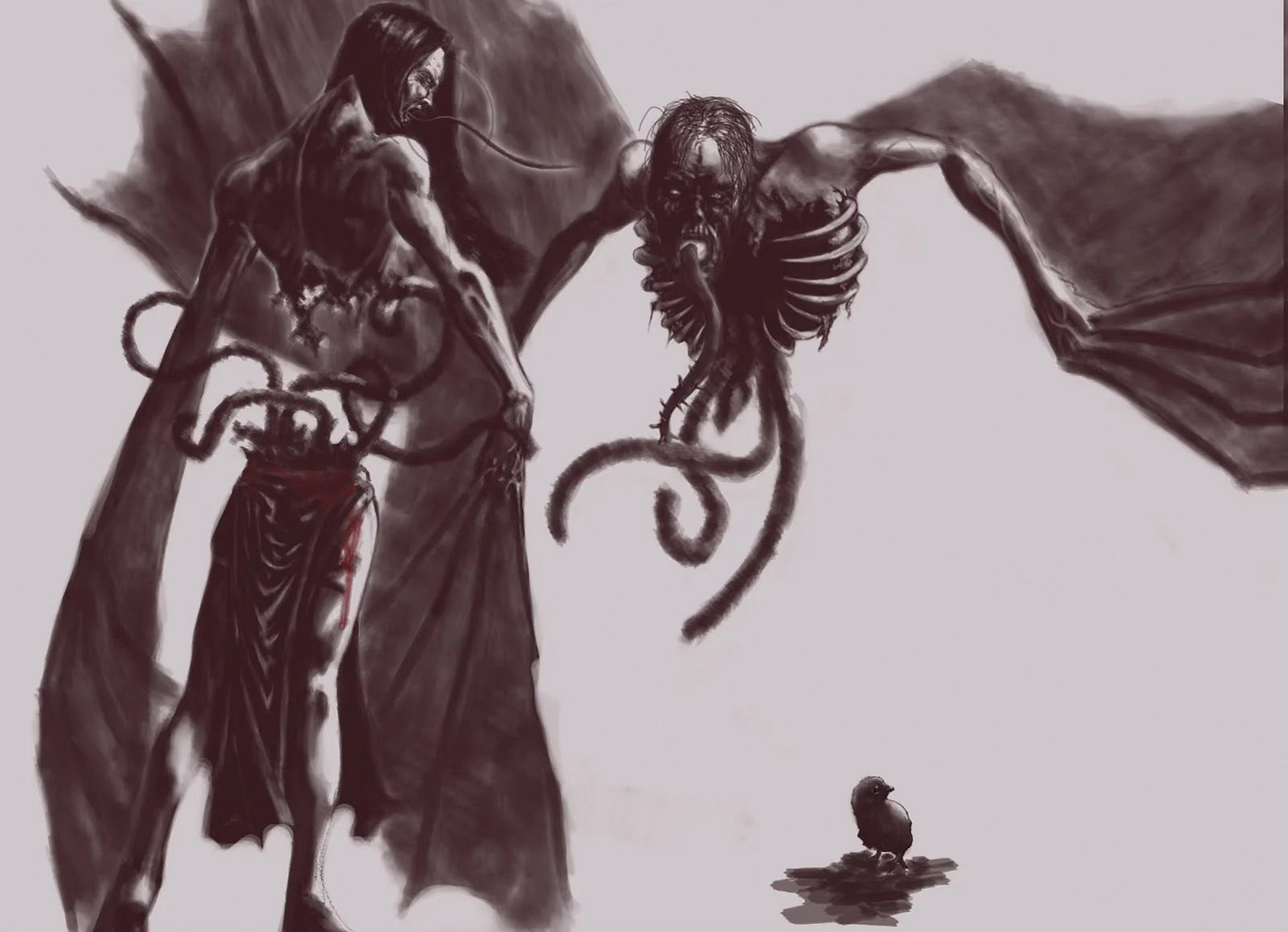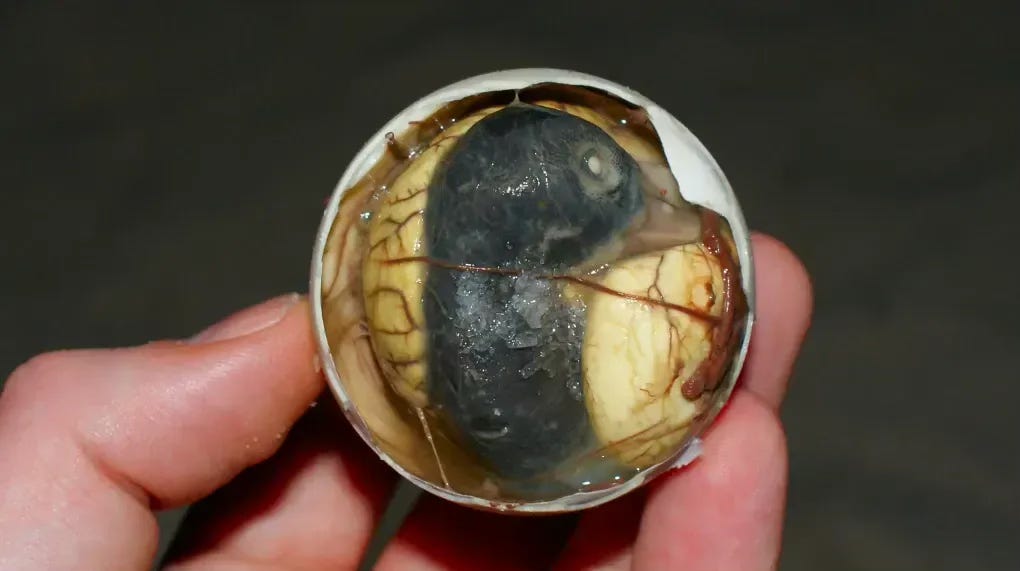This week’s monster will give you the horror fix you are craving. Meet the gruesome and magnificent - Manananggal!
Origin - Philippines (Similar to the penanggal or penanggalan from Malaysian folklore)
Catchphrase: “There is no God at Night!”
A Manananggal is an infamous and much-feared Aswang from Filipino folklore, specifically, a viscera-sucker. An Aswang is a Filipino monster that harms others, a shape-sifting evil spirit. There are several types of Aswang - corpse eaters, werebeasts, blood suckers, witches, and viscera-suckers. Since a Manananggal is a viscera-sucker, she dines on a human’s internal organs, bile and fetuses. She has a long, thin tube-like tongue that penetrates one of her victim’s orifice so she can feast on what’s inside. When the sun sets, she splits her body in half, leaving the bottom hidden on Earth. Her top half grows bat-like wings and she takes to the air, intestines dangling from her bloody waist, as she searches for her preferred meal - human fetuses.
Even for an ancient Book of the Dead, a Manananggal’s eating habits are a bit off-putting, but again, this is a no judgement zone. As always, who am I to yuck anyone’s yum? {shudder}

A Manananggal must hide her lower half while she hunts at night. Her abandoned lower half is a great vulnerability for this prowling hunter. If someone seeks to destroy her, they must find her lower half and put a mixture of salt, spices, vinegar, and ash atop it before sunrise. If successful, a Manananggal cannot make herself whole again and will perish. At night, she is a feared creature of the night who perches on rooftops as her long tongue slithers inside through a cracked window or chimney to penetrate and consume her victims. Sometimes, she will wait in a tree and attack her victim that way. She is said to chant, “siri, siri, there is no God at night, over trees, under houses.”
During the day, this beast is often a beautiful woman, usually one society doesn’t consider very powerful. There is a reason for this type of categorization. Part of it involves the Spanish colonization of the Philippines and the spread of Catholicism. Before the Spanish entered the Philippines, the Babaylan were women who held powerful roles in the society. They were shamans, mystics, healers, midwifes, and leaders. The Spanish priests were not used to women who had autonomy like this, let alone power. They would eventually demonize these women in many ways, such as connecting them to monsters who fed on fetuses in the night. That is why it is so important to keep control of your own stories and take back that control when other’s have tried to steal it from you. Modern Filipino artists and writers do just that as they explore the idea of the woman erased, demonized, and the trauma it still causes in their work around the Manananggal.

“For Filipina American or Pinay poets… the manananggal represents a woman erased, silenced, demonized, reduced, empowered, angered, untethered, unmoored…. They recreate the manananggal’s myth… Rachelle Cruz, who depicts her manananggal as a lost soul trying to find its way in a new land; Barbara Jane Reyes, whose manananggal is angry and misperceived; while more contemporary takes, like Danni Quintos demonstrates hers as a justification for who she is as someone who grew up in a predominantly white area; Maria Bolaños, who pays homage to those who come before and is haunted by this legacy; and finally, myself, with mine acting as a mentor…” (Manuel, Melanie. The Manananggal as Mythmaking)
These creatures pre-date Spanish colonization, and weren’t created by the Church, only manipulated and weaponized by it. Some speculate that in the early folklore, before this manipulation, that the fixation on pregnant women and their fetuses by the Manananggal was connected to the fear and pain around experiencing a miscarriage and simply pregnancy.
Regardless, the Manananggal is a perfectly terrifying and inspirational monster with an incredible ability to build myths around her. I stand in awe of her disgusting prowess. One of the most fascinating and revolting parts of her story is that each Manananggal is said to have a black chick inside of them. It is the thing that turned them into a monster. This image immediately reminds me of a street food delicacy from the Philippines called balut. Balut is a fertilized developing egg embryo that is boiled or steamed and eaten from the shell. Many people enjoy eating balut but some also report feeling disgust at consuming the embryo. This food tradition does seem to naturally link to the black chick within the Manananggal.
Like other vampiric creatures, a Manananggal can turn another human into one of her kind. A human can become one either by genetics, getting bitten by the monster, consuming another Manananggal’s saliva, performing a ritual involving two fertilized eggs, and finally, the grossest way, if another Manananggal transfers the black chick from inside her through mouth to mouth contact. That act is horror perfection, and I’ll allow your imaginations to do the work conjuring it… for now.
In the very near future, there will definitely be a horror short about this amazing beastie arriving in your inbox. In the meantime, keep your windows shut after sunset and remember to say “tabi, tabi po” or “passing through” for protection when in a graveyard or forest.
As always, please share and/or leave a comment if you enjoyed this installment of Monster of the Week.
Wicked Tree Press News:
We are also not posting on Facebook and IG anymore. Find me over at Bluesky if you are there! Please leave a comment on one of my posts so I know you came from Substack, and I can connect with you.
If you were into this week’s monster, please, please check out some of my favorite Filipino comics creators - Diwata Comics, Kwento Comics, Mark Mactal (a long-time collaborator), and Arthur N. Ebuen. Also check out FilAm Creator Con.








I'm always happy to see pre-colonial Philippine mythology discussed by other writers. Maximo D. Ramos captured some of the oral traditions about manananggal and other viscera suckers (aswang) in his collections of writing. I saw a fantastic short -- MOSQUITO LADY by Kristine Gerolaga -- that brought the manananggal myth into a modern-day setting. There's so much rich story-telling surrounding this monstrous woman. And new stories as yet to be told!
Terrifying. I've heard of this before but your image caught my eye and I never knew their catchphrase! Unsettling in all the best ways.